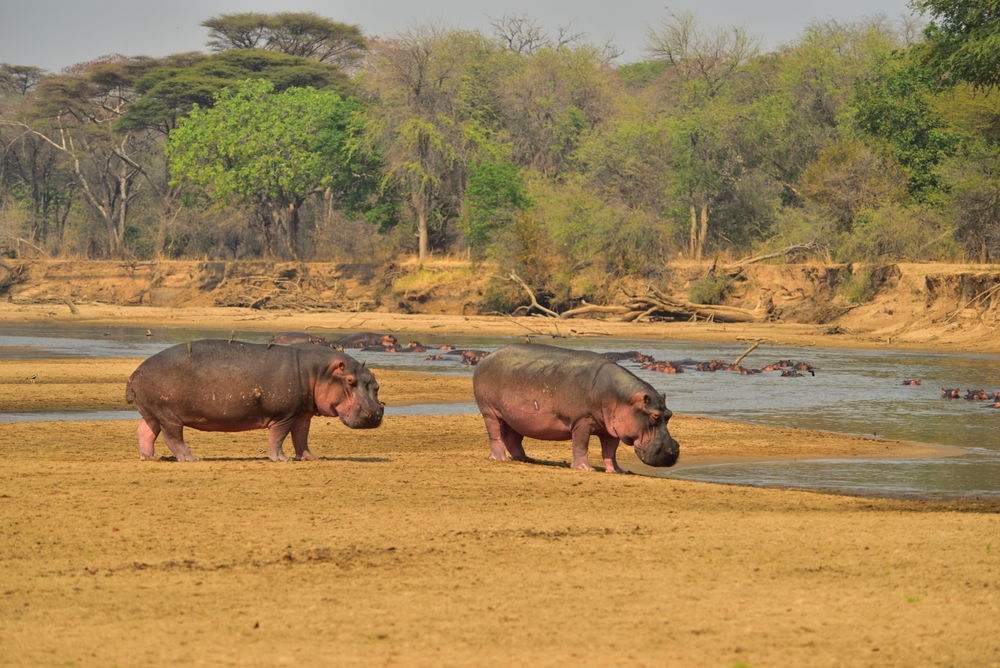South Luangwa Overview
South Luangwa National Park, known locally as Paki ya Luangwa ya Kumwesu, is one of Zambia’s most iconic wildlife sanctuaries and a premier safari destination in Africa. Covering approximately 9,050 square kilometers (3,494 square miles) in the eastern part of Zambia, the park follows the winding Luangwa River, which serves as the lifeblood of its thriving ecosystems. Established in 1972, South Luangwa is renowned for its exceptional wildlife densities, diverse habitats, and pioneering role in walking safaris.
The park’s landscape is a stunning mix of riverine forests, mopane woodlands, grasslands, and oxbow lagoons, all shaped by the meandering Luangwa River. Although the park does not feature towering mountains, the gentle escarpments of the Muchinga Highlands frame its western boundary, adding to its scenic beauty. Seasonal floodplains and lagoons created by the river further enhance the region’s allure, especially during the dry season when animals congregate around these water sources.
South Luangwa is celebrated for its incredible wildlife, particularly its large populations of elephants, buffalo, and hippos. It is one of the best places in Africa to see leopards, which are commonly spotted during night drives. Lions, wild dogs, and spotted hyenas also thrive here, while the park is home to unique subspecies such as the Thornicroft’s giraffe and Cookson’s wildebeest, found only in the Luangwa Valley. The river teems with crocodiles and hippos, providing spectacular viewing opportunities for visitors.
The park is a paradise for birdwatchers, boasting over 450 recorded species. Notable birds include the crowned crane, carmine bee-eater, and African fish eagle, whose haunting calls are synonymous with the Luangwa River. During the rainy season, the park bursts into color as migratory birds return, and the lush greenery creates a vibrant backdrop for wildlife.
South Luangwa National Park is widely regarded as the birthplace of walking safaris, offering visitors a unique and intimate way to explore the bush. Led by highly skilled guides, walking safaris allow guests to experience wildlife and the surrounding ecosystems up close while learning about the smaller wonders of nature, such as plants, insects, and animal tracks.
Conservation efforts in South Luangwa are ongoing, with initiatives to combat poaching, mitigate human-wildlife conflict, and promote sustainable tourism. Organizations like Conservation South Luangwa (CSL) and Zambian Carnivore Programme work tirelessly to protect the park’s biodiversity, focusing on predator research and anti-poaching patrols. Community-driven projects ensure local populations benefit from the park’s existence, fostering support for its preservation.
Visitors to South Luangwa can enjoy game drives, walking safaris, and night safaris, offering unparalleled opportunities to witness nocturnal wildlife behavior. Accommodations range from luxury lodges to intimate bush camps, providing a variety of options for travelers seeking a true African safari experience.
In summary, South Luangwa National Park is a jewel of Zambia, renowned for its unparalleled wildlife, scenic beauty, and commitment to conservation. It remains a bucket-list destination for safari enthusiasts worldwide.


















































































